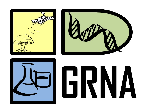Banca de DEFESA: HAROLDO ARAÚJO DA SILVA
Uma banca de DEFESA de MESTRADO foi cadastrada pelo programa.DISCENTE : HAROLDO ARAÚJO DA SILVA
DATA : 24/09/2020
HORA: 15:00
LOCAL: Via Zoom - Link
TÍTULO:
PHYTOCHEMICAL, ANTIOXIDANT AND MICROBIOLOGICAL STUDIES OF AGRO-INDUSTRIAL WASTE FROM
CUPUAÇU (Theobroma grandiflorum Schum.) FROM AMAZON.
PALAVRAS-CHAVES:
Bioprospecting; phytochemistry; food Technology; Molecular Networking.
PÁGINAS: 60
GRANDE ÁREA: Outra
ÁREA: Ciências Ambientais
RESUMO:
The taxonomically verified diversity of tropical rainforest plants includes 14,003 species, of which 6,727 are trees including cupuaçu (Theobroma grandiflorum Schum.) Whose added value is in the pulp and almonds that make up the fruit used in the food and cosmetics industry. However, with the increasing exploitation there is a significant increase in the volume of organic waste generated due to agro-industrial processing, which creates an environmental problem, mainly in Pará, the main Brazilian producer of cupuaçu fruits. Studies focusing on these residues are scarce, so we aim to analyze the agro-industrial residues of T. grandiflorum through the phytochemical and biological activities aimed at bioactive products. Phytochemical characterization was obtained by quantifying the total phenolic compounds, total flavonoids and condensed tannins. In biological tests, the antioxidant activity was evaluated by the methods of DPPH and ABTS and antimicrobial activity determined by the method of diffusion in wells to determine the Minimum Inhibitory Concentration (MIC). Chemical characterization was performed by High Performance Liquid Chromatography coupled to a photo-diode array detector (HPLC-PDA), High Performance Liquid Chromatography coupled to a Mass Spectrometer (HPLC-ESIMS / MS) and annotations of chemical compounds through the Molecular Networking network. The results obtained showed the fruit with an average weight of 1146.2 g, corresponding to 37.3% of epicarp, 36.4% of mesocarp, 22.6% of endocarp and 3.7% of central fiber. In the phytochemical characterization the seeds and peels obtained a higher concentration of phenolic compounds without showing statistical difference, however the seed stood out for presenting higher levels of flavonoids and condensed tannins, in relation to the other parts of the fruit. In the antioxidant activity, the peel showed greater capture of the DPPH and ABTS radicals than the other samples, which led to ethanolic and hydroalcoholic extracts from the bark residues which in the chemical characterization by HPLC-PDA showed major bands in the wavelength λ = 270 nm characteristic of condensed tannins. The analyzes by HPLCESI-MS/MS characterized 19 substances and, presented ions of greater intensity with m/z 341 characteristic of the compound caffeic acid 3-glucoside and the ion m/z 289 suggestive of catechin mass for hydroalcoholic extracts and ethanolic, respectively. The analysis by molecular networks noted 13 substances correlated with both extracts corresponding to the class of phenolic acids and flavonoids. After characterization, the extracts were tested for antimicrobial activity with a positive result for hirdroalcoholic extracts in the strains S. aureus, Salmonella sp, and E. coli. While the ethanolic extract was active only against Salmonella sp. This unprecedented study identified phenolic compounds from cupuaçu bark with antioxidant and antimicrobial potential, and the strategy of combining HPLC-ESIMS/MS and Molecular Networking techniques enabled a quick and optimized interpretation of the data generated from the de-replication of bark extracts T.grandiflorum.
MEMBROS DA BANCA:
Externo ao Programa - 1496075 - BRUNO ALEXANDRE DA SILVA
Presidente - 152.758.687-15 - LAURO EUCLIDES SOARES BARATA - UFOPA
Interno - 1739961 - MANOEL ROBERVAL PIMENTEL SANTOS




